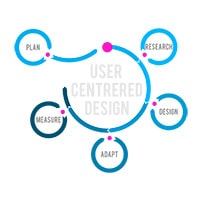How to get Leaders to Invest in UX
Business leaders have plenty of things to deal with on a daily basis, and they have to strike a fine balance between investing in the future and protecting the demands of the present. It isn’t an easy thing to do. They rely on their advisors and employees to bring them the information they need to justify the decisions proposed to them.
You may know instinctively that UX is an incredibly important element of web design, but you can’t expect your convictions (however born of expertise) to convince CEOs and managers that it’s something worth their attention (let alone the commitment of resources). You need solid arguments, including examples and authoritative confirmations of your points.
Here’s how I recommend you go about persuading business heads to invest meaningfully in UX:
Demonstrate the ROI of Good Design
A challenge of selling UX as a key factor has always been making it clear how it delivers value, but it has become a little easier over time. Long-term investigations such as The UX Fund have found that the companies who invest in UX and related improvements fare better as time goes by than those who don’t, providing valuable supporting evidence.
There are also myriad stats about UX Return on Investment (ROI) that can be compellingly deployed, concerning aspects including customer loyalty and reduced costs. Although I wouldn’t advise relying too heavily on them. The chains of citation can be a little sketchy, and data is often out of date. Given how rapidly the technology world moves, I strongly suggest using specific (and relatively recent) case studies, ideally including some of your previous projects.
A good example of such a study you can use time after time is that of the UX improvements to Javafly that launched in January 2016. It contains valuable performance metrics and shows the thinking behind some of the changes made. There’s also this study from Drive Research that presented direct confirmation from the client that their ROI on the project was an impressive 665%. Sticking to clear real-world scenarios will make it hard to deny how influential UX can be.
Explain that the Work is Front-Loaded
Much of the traditional sales model focuses on practices that require consistent effort and resource investment. Think of making calls, sending emails, or advertising through PPC or traditional means. The drip-feed focus on lead generation can get fast results at fairly low cost, but as soon as you taper back your campaigns, the payoff will disappear.
UX improvement is entirely different. While it will never be advisable to pull all funding from UX development (standards and technology change on a consistent basis, as do consumer preferences), good updates made one year will continue to bring in increased revenue long after they’ve been implemented. The resources allocated to UX have been scaled back, unless a platform is being overhauled on a frequent basis. There will come a point at which further optimization becomes a lot more challenging to achieve.
If you can get a business leader to understand that they’re not looking at a project that will continue to cost them a great deal over time without delivering predictable results, they’ll be in a better position to rationally assess what it brings to the table and approve a sizable budget and willingness to invest.
Discuss Their Online Experiences
Matters of business can feel very abstract and disconnected, especially when your job requires you to deal with them at a heated pace. When you’re dealing with work-laden business leaders, trying to convince them to go in your proposed direction, it can be extremely effective to relate the issue to their personal experiences.
As far as UX goes, there’s a lot of scope here. Almost everyone in business uses the internet for purposes both professional and personal, and will invariably have their own set of grievances with websites that frustrate and enrage them, as well as a fondness for the websites that make their life easier or more enjoyable.
By asking them about what they like and dislike about the internet stores and services they’ve used, you’ll be able to get them thinking about how those experiences have swayed their purchasing decisions and won or lost their brand loyalty.
And if they realise how they’ve been affected by UX, they’ll have to accept how likely it is that the same is true of everyone else, including the users they’re looking to attract and keep happy. Instead of telling them a story to get your point across, you’ll have used their own story to do it.
Point to Rising Overall Standards
Internet connections are getting faster, software is growing in sophistication, and electronic devices keep becoming more powerful— the result, inevitably, is that consumer expectations are skyrocketing. We’ve seen the usual conveniences so often that we’re no longer impressed.
And since an increasing proportion of websites are created through systems like WordPress (a template-led website creator) or Shopify (a scalable online store builder) that ensure adherence to certain UX standards, solid fundamentals are becoming the norm, making it harder to stand out. It’s no longer enough to be just alright.
This is a worthwhile point to make because stagnation is a real problem for many businesses. They imagine that the same things that worked last year will work this year as well, and the next, and the year after that. Reminding people that you need to keep moving and changing or you’ll be left behind is a good motivational tool.
Try a Proof-of-Concept Test Case
If you’re looking to introduce a new foodstuff brand to a wary market, you give out samples. People who wouldn’t be willing to buy something unfamiliar will happily give you a chance to impress them, after which point they will be more willing to make a purchase.
The same goes with iterative UX development. You can take a small but important segment of a website—perhaps a CTA section, or an order form, or a navigation bar—and put some work into making it better. Then show it to the people in charge. You can also ask them to agree to running some A/B tests for a short while, explaining that it won’t cost them anything significant to do so.
Even if your test produces nothing more than a modest but consistent bump in traffic, conversion rate, or any other important metric, it will show people how the process works. It will reassure them that it isn’t going to be a painful drawn-out experience if they decide to go for UX in a big way. It’s essentially drawing from the Lean UX approach of agile project management by looking to identify and resolve the issues with one particular element.
Now get them to invest
UX can be a tough topic to raise with corporate representatives, because it encompasses a variety of complex matters and attacks the default assumption that we make retail decisions primarily because of things like pricing. But it’s so important to get UX right that you have to make your best effort to convince them to invest in that.
If you show them how financially beneficial UX development can be, explain why it will only get less expensive over time, relate it to their personal experiences online. Make them aware of rising standards, and propose a test run. You will have a much stronger chance of persuading them to approve some work. Good luck!







No responses yet to “How to get Leaders to Invest in UX”